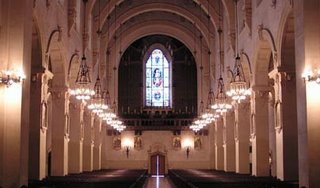In this episode of Modern Marvels, we look at the technology conceived or developed by America's first billionaire, Howard Hughes. A passionate aviator, Hughes built and flew planes that broke speed records.
He developed war machines, spy aircraft, and commercial airliners. Engineers, operating under his guidance, enjoyed great success developing guided missiles and satellites for military and commercial uses.
In short, Hughes changed the technology of the modern world. Hughes' innovations in flying began in 1935, when he helped design and flew the fastest airplane in the world, the H-1 racer, at a record breaking 352 mph. Its design pioneered reduction of drag using rivets and joints that were flush with the aircraft's brushed aluminum skin.
Next, Hughes turned his talents to the relatively new commercial airline industry. He bought a controlling interest in TWA, and in 1943, Hughes' company supplied the airline with the Constellation - an airliner developed under Hughes' personal guidance. It was the fastest commercial plane in the world, with a pressurized cabin allowing it to fly above turbulence, making for a more comfortable passenger experience.
Since metal was rationed in the early years of World War Two, Howard Hughes believed his contribution would be in seeking alternative materials to make planes. In 1943, Hughes began to build what would become known as one of his most famous failures the H-4 Hercules, popularly nicknamed the "Spruce Goose."
The aircraft's many technical innovations included a system for laminating birch wood for the airframe, a fire suppressant system, and the first "artificial feel system" in its control yoke. For each pound of pressure exerted on the control yoke by the pilot, the elevator received 1,500 pounds of pressure to move it, creating a tactile response never before attempted in an aircraft.
While the Spruce Goose was in development and under construction, Hughes' passion for alternative airframes drove him to create another wooden aircraft, and it almost cost him his life. On July 7th 1946, he flew the XR-11 reconnaissance aircraft and crashed it. The injuries he sustained required painkillers.
By the time Hughes' Spruce Goose was ready to fly, the war was over. Rather than a wartime necessity, it was an aviation curiosity and albatross. To silence its detractors, Hughes took it up for a flight on November 2nd, 1947. It would be the only time aloft for the so-called "Flying Boat." It never saw service.
Hughes moved on to new markets in military guidance systems and microelectronics and he hired specialists to develop this electronic wizardry for the Air Force and Navy. After World War Two, he was able to grow his company from a four-person operation to a corporation of 80,000 employees. He had the foresight to buy land in Las Vegas, continued to be a power broker in the airline industry, and did it all without keeping a formal office or regular office hours, preferring to work out of whatever hotel suite he happened to be living in.
During the Cold War, Hughes Electronics would become the single largest supplier of weapons systems to the USAF and Navy. Howard Hughes hired the best and brightest to develop electronic weapons control systems, and remote-guided weapons such as the GAR - a Guided Air Rocket that could reach speeds of Mach 2. In 1955, Hughes' companies provided the first air-to-air guided U.S. Air Force missile called the AIM 4F Super Falcon.
In 1963, Hughes companies created and launched SYNCOM, the first geosynchronous communications satellite, enabling continuous live TV broadcast. It allowed the 1964 Tokyo Olympics to be broadcast live.
Despite the impressive heights reached by Hughes' technological empire, his health and mental well-being were in free fall. He began to withdraw from the day-to-day operation of his companies, and took no role in designing new planes, satellites, or war machines.
That is, with one notable exception. In the early 1970s, the CIA asked Hughes to develop a secret ship, the HMR-1 - Hughes Mining Barge 1. Its cover story was to recover manganese from a depth of 17,000 feet, but its real task was murkier. The CIA wanted a sunken Soviet sub brought to the surface. Hughes' ship was called the Glomar Explorer, and it was built in 1973. The salvage operation was partially successful, as the sub broke in half as it was brought to the surface, but the remaining section did include two nuclear torpedoes, cipher and coding equipment, and eight dead Soviet crewmen.
During the last years of Hughes' life he was not seen publicly or photographed, rarely left the hotel suites he occupied, and was terrified of germs. But when he died on April 5, 1976, he left a tremendous legacy in aviation and technology.
Hughes' companies made the Apache military helicopter, a space probe that mapped Venus by radar, and Galileo, the first spacecraft to penetrate Jupiter's atmosphere. A medical institute that he founded does research in nanotechnology and stem cells. Whenever we board a commercial airliner, watch television via satellite, or marvel at America's military might, we might do well to remember the man who flew faster than his peers, took risks that often paid off and sometimes didn't, who was at heart an aviator obsessively dedicated to both the art and the science of flight.
























